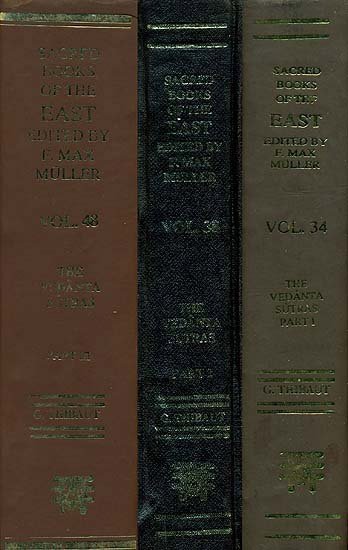Brahma Sutras (Ramanuja)
by George Thibaut | 1904 | 275,953 words | ISBN-10: 8120801350 | ISBN-13: 9788120801356
The English translation of the Brahma Sutras (also, Vedanta Sutras) with commentary by Ramanuja (known as the Sri Bhasya). The Brahmasutra expounds the essential philosophy of the Upanishads which, primarily revolving around the knowledge of Brahman and Atman, represents the foundation of Vedanta. Ramanjua’s interpretation of these sutras from a V...
Sutra 4.2.20
20. And those two (paths) are, with a view to the Yogins, mentioned as to be remembered.
The text quoted does not state an injunction for those about to die, of a special time of death; but there are rather mentioned in it those two matters belonging to Smṛti and therefore to be remembered, viz. the two paths—the path of the Gods and the path of the Fathers—with a view to those who know and practise Yoga; the text intimating that Yogins should daily think of those paths which are included in Yoga meditation. In agreement herewith the text concludes, 'Knowing these two paths no Yogin is ever deluded. Hence in all times, O Arjuna, be engaged in Yoga' (Bha. Gī. VIII, 27). Through the terms 'the fire, the light,' 'the smoke, the night,' etc. the path of the Gods and the path of the Fathers are recognised. Where, in the beginning, the text refers to 'the time when,' the word 'time' must be understood to denote the divine beings ruling time, since Fire and the rest cannot be time. What the Bha. Gī. aims at therefore is to enjoin on men possessing true knowledge the remembrance of that path of the Gods originally enjoined in the text, 'they go to light' (Ch. Up. IV, 15, 10); not to determine the proper time of dying for those about to die.—Here terminates the adhikaraṇa of 'the southern progress.'
